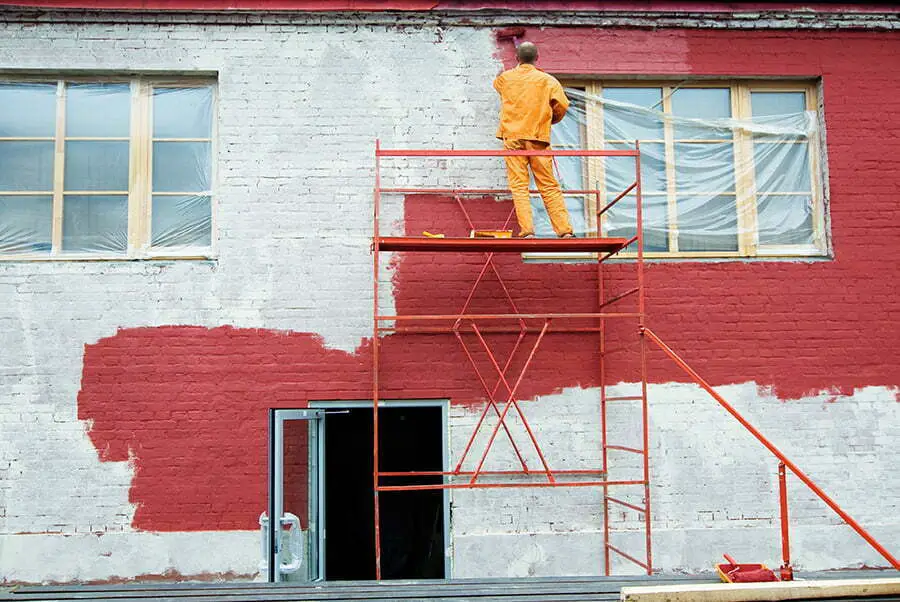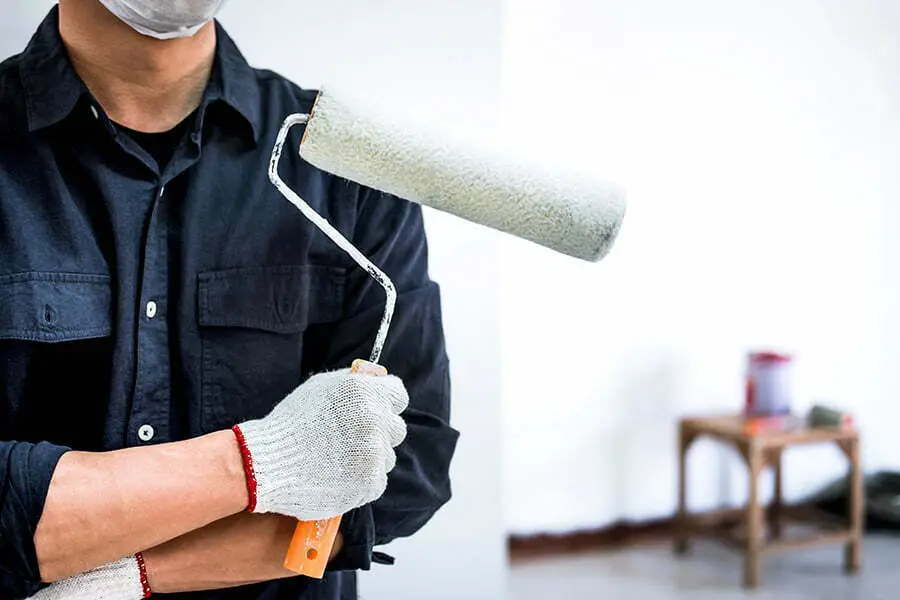Yes, polymers can be used in exterior and interior finishes and coatings.
Polymers are an incredibly versatile material used in various applications, including exterior and interior finishes and coatings. Polymers are strong, durable, lightweight, easy to work with, and offer excellent protection against environmental conditions.
They can create a wide range of textures and colors for any surface or finish. Polymers provide superior resistance to abrasion and corrosion compared to traditional materials such as paint or varnish.
With the right formulation and application techniques, polymers can provide long-lasting protection for exterior surfaces while enhancing interior spaces’ appearance.
Polymers enhance a space’s aesthetics by providing a glossy finish or decorative patterns.
Key takeaways:
- Polymers can be used in both exterior and interior finishes and coatings.
- They offer a wide range of colors, textures, and protection against environmental conditions.
- Polymers provide superior resistance to abrasion and corrosion compared to traditional materials.
- They enhance aesthetics with glossy finishes and decorative patterns.
- Polymers are durable, easy to clean, and require minimal maintenance.
Exterior Finishes

Polymers are a type of material that can be used in exterior finishes and coatings. It is a versatile material that protects from rain, snow, and UV rays.
Polymer-based coatings are also highly durable and resistant to wear and tear. They can be applied to various surfaces, including wood, metal, concrete, stucco, brick, stone, and more.
Exterior finishes made with polymers are often used on buildings or other structures to protect them from the elements while providing an attractive aesthetic look. These finishes may include paints or stains containing polymer resins, which help create a protective barrier against water damage while allowing the surface to breathe naturally.
These finishes may also contain additives such as UV inhibitors which help prevent fading due to sun exposure over time.
Interior Finishes

Polymer materials can be used in interior finishes and coatings to provide a protective layer on walls, floors, and other surfaces. Polymers are durable and long lasting, making them an ideal choice for interior finishes.
They can also be applied in various colors and textures to create unique looks that will last for years. Polymer coatings are easy to clean and maintain so they won’t require frequent touch-ups or repairs.
Polymers are resistant to water damage, mold growth, staining, fading from sunlight exposure, and other environmental factors that could cause damage over time. This makes them an excellent choice for residential and commercial applications where durability is important.
Polymer-based Paints
Polymer-based paints are a type of paint that uses polymers as the main ingredient. Polymers are long chains of molecules that can be used to create various materials, including paints.
Polymer-based paints have several advantages over traditional oil and latex-based paints. They are more durable, resistant to fading and chipping and provide better coverage than other types of paint.
They often require fewer coats for full coverage and dry faster than other types of paint. These properties make them ideal for use in exterior or interior finishes and coatings where durability is important.
Protective Coatings
Polymers can be used to create protective coatings for exterior and interior surfaces. These coatings provide a barrier between the surface and the environment, protecting it from damage caused by weathering, corrosion, abrasion, and other factors.
Polymer-based coatings are often applied as thin films or layers that form a hard shell around the surface they protect. They can also fill in cracks or surface gaps to make them more durable and resistant to wear and tear.
Polymer-based coatings can help reduce fading of colors on painted surfaces due to exposure to sunlight or other environmental elements.
Environmental Impact of Polymer-based Finishes and Coatings
Polymer-based finishes and coatings have gained popularity in the construction industry due to their numerous advantages. However, it is important to consider their environmental impact as well.
One of the key concerns is the use of volatile organic compounds (VOCs) in these products. VOCs are chemicals that can be released into the air during application and drying, contributing to air pollution and potentially harmful effects on human health.
Fortunately, advancements have been made in polymer coating technology to reduce VOC emissions. Low-VOC or zero-VOC formulations are now available, which significantly minimize environmental impact without compromising performance or durability.
Polymers used in finishes and coatings can offer enhanced resistance against weathering agents such as UV radiation, moisture, and temperature fluctuations. This increased durability reduces maintenance requirements over time compared to traditional materials like paint or wood stains that may require frequent repainting or refinishing.
Furthermore, some polymer-based finishes incorporate recycled content or renewable resources into their composition. By utilizing recycled materials such as plastic waste from landfills or agricultural byproducts like cornstarch derivatives instead of virgin resources for production purposes; these eco-friendly options help reduce overall carbon footprint while still providing excellent performance characteristics.
Polymer-based finishes and coatings offer a range of environmentally friendly options that contribute towards sustainable construction practices. By choosing low-VOC formulations, incorporating recycled content, or opting for renewable resource alternatives; the negative impacts on both human health and our planet’s ecosystem can be minimized.
Sustainability Prospects in Polymer Coating Technology
One of the key advantages is that polymers can be formulated to have low volatile organic compound (VOC) content, reducing harmful emissions into the environment. This is particularly important for indoor applications where air quality is a concern.
Polymer coatings offer excellent durability and weather resistance, which extends the lifespan of buildings and reduces maintenance needs. By minimizing the frequency of repainting or refinishing, polymer coatings contribute to resource conservation by reducing material consumption over time.
Furthermore, some polymers used in coatings are derived from renewable resources such as plant-based materials or recycled plastics. These bio-based or recycled polymers help reduce reliance on fossil fuels while promoting a circular economy approach.
In terms of energy efficiency, certain types of polymer coatings possess reflective properties that can enhance solar reflectance index (SRI). Higher SRI values result in reduced heat absorption by building surfaces during hot weather conditions.
Consequently, this lowers cooling demands inside buildings and contributes to energy savings.
Emerging Trends in Polymer Coatings for Construction
In recent years, there have been several emerging trends that are shaping the use of polymer coatings in construction projects.
One notable trend is the development of self-healing polymer coatings. These innovative coatings have the ability to repair themselves when damaged or scratched.
By incorporating microcapsules filled with healing agents into the coating formulation, any cracks or imperfections can be automatically repaired without human intervention. This not only extends the lifespan of coated surfaces but also reduces maintenance costs over time.
Another trend is focused on enhancing energy efficiency through advanced polymer coating technologies. Reflective polymers are being developed to create cool roof systems that reflect sunlight and reduce heat absorption by buildings.
This helps lower cooling costs during hot summer months and contributes to a more sustainable built environment.
Furthermore, antimicrobial polymers are gaining popularity as an effective solution for maintaining hygienic surfaces within buildings such as hospitals or schools where cleanliness is crucial. These specialized coatings inhibit bacterial growth on surfaces and help prevent infections from spreading.
In addition to these functional advancements, there has also been a growing interest in using bio-based polymers derived from renewable resources instead of traditional petroleum-based ones for environmental sustainability reasons.
Role of Polymers in Energy Efficiency of Buildings
One way they achieve this is through their insulating properties. Polymers can be used to create insulation materials that help regulate temperature and reduce heat transfer, both in exterior and interior applications.
In exterior finishes, polymer-based coatings can act as a protective layer against external elements such as sunlight, rain, and wind. By providing an additional barrier between the building’s structure and the outside environment, these coatings help prevent thermal bridging – which occurs when there is a direct path for heat to flow through walls or other components of the building envelope.
Interior finishes utilizing polymers also contribute to energy efficiency by improving thermal comfort within buildings. For example, paints containing special polymer additives can provide better insulation properties compared to traditional paint formulations.
This helps maintain stable indoor temperatures by reducing heat loss or gain through walls.
Furthermore, polymers are lightweight materials that offer design flexibility for construction projects aiming at improved energy performance. They allow for innovative designs with reduced material usage while still maintaining structural integrity.
Incorporating polymers into both exterior and interior finishes contributes significantly towards achieving higher levels of energy efficiency in buildings.
Health and Safety Implications of Using Polymer Coatings
While polymers offer numerous benefits, such as durability and versatility, certain precautions need to be taken during their application.
One potential concern is the release of volatile organic compounds (VOCs) during the curing process of some polymer coatings. VOCs are chemicals that can have adverse effects on human health and contribute to air pollution.
However, many manufacturers now produce low-VOC or even VOC-free polymer coatings that minimize these risks.
Another aspect to consider is proper ventilation during application. Adequate airflow helps dissipate any fumes or odors associated with the coating materials, ensuring a healthier environment for workers and occupants alike.
Personal protective equipment (PPE) should be used when handling polymer coatings containing potentially hazardous substances. This may include gloves, goggles or face shields for eye protection if there’s a risk of splashing or spraying liquids.
It’s worth noting that once fully cured and dried according to manufacturer instructions – which typically takes several days – most modern polymer-based finishes become inert and pose no significant health risks under normal conditions of use.
By being aware of these considerations related to health and safety when using polymer coatings in construction projects both indoors and outdoors ensures not only a successful outcome but also promotes well-being for everyone involved.
FAQ
What polymers are used for coating?
Polymers used for coating include natural and synthetic rubber, urethane, polyvinyl chloride, acrylic, epoxy, silicone, phenolic resins, and nitrocellulose.
What do polymers do in paint?
In paints, polymers function as binders to improve adhesion to surfaces, additionally forming a protective film to sustain the paint’s color and potentially offer low or zero emissions.
Why are fabrics coated with polymers?
Fabrics are coated with polymers to add a resistant layer that offers increased durability against wear and tear, especially for items subjected to high levels of friction, such as personal protective equipment, power transmission belts, backpacks, footwear, and synthetic leather products.
How do polymers contribute to the durability of modern construction materials?
Polymers contribute to the durability of modern construction materials by enhancing their resistance to environmental effects, mechanical stresses, and altering their physical properties like flexibility, strength, and permeability.
In what ways can polymer-enhanced concrete reduce building costs?
Polymer-enhanced concrete reduces building costs by improving durability, reducing maintenance requirements, enabling the use of thinner structures, and accelerating construction times.
What are the environmental implications of using polymers in the construction industry?
The environmental implications of using polymers in the construction industry include the release of toxic substances during manufacturing and disposal, depletion of non-renewable resources, and plastic waste accumulation.
Recap




